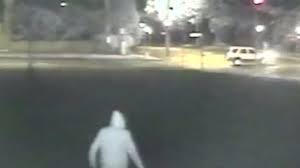
Circumstantial Evidence – Can you absolutely prove it?

It is a common misconception amongst people that one cannot be convicted of a criminal offence unless there is some “hard evidence” that the defendant committed the crime. What people think of here is evidence such as CCTV footage, fingerprints, DNA or eyewitness evidence. However in many cases of criminal offences, such evidence does not exist, and yet offenders can still be convicted.
The reason for this is the law allows the prosecution to lead what we call Circumstantial Evidence, that is evidence that doesn’t directly prove someone committed a crime, but enables the jury to draw inferences and conclusions, based on all the circumstances proven, that the offender did indeed commit the offence.

The way circumstantial evidence works is that the prosecution is able to prove certain facts, based on evidence it places before the court, that then enables the court to draw inferences that another fact must be true. An example often given is where a witness gives evidence that when they went to bed the grass outside their window was dry, and when they woke up, it was wet. These are facts proven by the witness’s evidence. An inference can then be drawn from those facts that it rained during the night.
Of course this example also shows the problem with circumstantial evidence, that is that other inferences can also be open on the same facts. And so the law provides that an inference in favour of the guilt of an accused can only be drawn where it is the only rational inference available on the proven facts.

In a leading High Court case, Barca v The Queen (1975) 133 CLR 8216, it was said:
“When the case against an accused person rests substantially upon circumstantial evidence the jury cannot return a verdict of guilty unless the circumstances are ‘such as to be inconsistent with any reasonable hypothesis other than the guilt of the accused’. To enable a jury to be satisfied beyond reasonable doubt of the guilt of the accused it is necessary not only that his guilt should be a rational inference but that it should be ‘the only rational inference that the circumstances would enable them to draw.”

In practice this means that even though there might be an inference available on the evidence that the defendant is guilty, if there is also a reasonable hypothesis consistent with the evidence that is not consistent with the accused being guilty, then the verdict must be Not Guilty. However, as the High Court reiterated in the infamous case of R v Baden-Clay [2016] HCA 35 the reasonable hypothesis must be something beyond mere conjecture.
A recent case example of the application of the principals of circumstantial evidence can be found in the Arson trial of R v Williams in the Brisbane District Court. The defendant there was charged with setting fire to an abandoned house on Nudgee Road at Hamilton. The fire investigator could not determine the cause of the fire but that it was most likely of human origin as the building was abandoned and frequented by squatters.

The circumstantial evidence relied upon by the prosecution to prove the defendant lit the fire was that there was CCTV footage of the defendant on part of the premises (not the area where the fire started) around the time of the fire, and that he was apprehended by police in the area in possession of a lighter and a juice extractor that smelt like smoke.
The court found there were rational inferences that could be drawn from these facts, that were consistent with the innocence of the defendant, that is the fire was not caused by human intervention, or was accidentally or deliberately lit by one of the other squatters that frequented the property. The fact the defendant was also on the property at the time, did not exclude these rational inferences beyond reasonable doubt.

And the fact he had a lighter, whilst also possessing cigarettes, and a juice extractor that smelt of some undefined smoke, when nothing else in his clothing or belonging smelt likewise, also did not displace these reasonable hypotheses. Accordingly it was held there was no case to answer.

A case that relies wholly on circumstantial evidence can at times be quite compelling when there is a series of incontrovertible facts that when taken together bear no rational explanation other than the guilt of the accused. However where there is a rational hypothesis not consistent with guilt, that hasn’t been excluded by the prosecution beyond reasonable doubt, the defendant must be found Not Guilty.

This article is of a general nature and is intended for information only. It should not be relied upon as legal advice. If you require further information, advice or assistance for your specific circumstance, please contact us at Bouchier Khan Lawyers.
